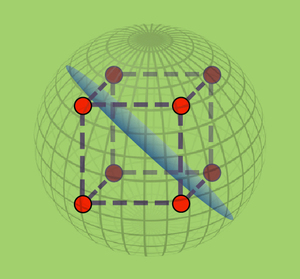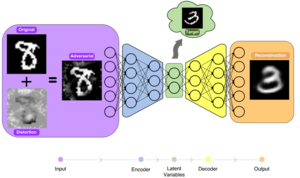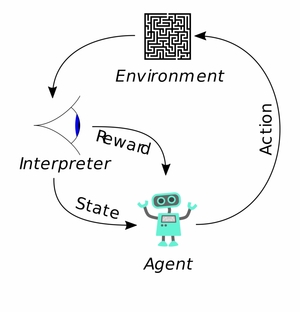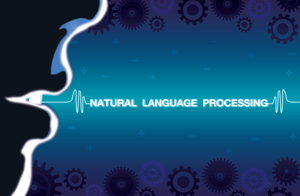Gain an understanding of AI, learn how to describe real world problems as artificial environments, and about the various concepts and techniques in artificial intelligence.
Access Time: 1 Month
Course Details:
Introduction to Artificial Intelligence
Get an understanding of AI, which will allow you to describe real-world problems as artificial environments.
- describe the four main definitions of artificial intelligence
- describe some of the fields in artificial intelligence research and their applications
- list some of the techniques used to build artificial intelligence systems
- define intelligent agents
- describe the different types of intelligent agents
- define the task environment that intelligent agents live in
- distinguish between an observable, a partially observable, and an unobservable environment, and describe how these affect agents
- describe how the number of agents in a given environment can affect an agent
- define deterministic and stochastic environments and how the level of certainty in an environment affects agents
- describe the different types of environmental behavior and how this can affect agents
- create a description of an environment related to a particular problem and how an agent might behave in that environment
Search Problems
A definition for search problems and useful methods to solve these problems
- Introducing Search Problems
- Brute Force Searching
- Informed Searching
- Local Searching
- Practice: Identifying Search Problems
Constraint Satisfaction Problems
See how constraint satisfaction algorithms are better than search algorithms in some cases, and how to use them
- define constraint satisfaction problems and describe how they are different from search problems
- list some examples of problems that are better for constraint satisfaction algorithms than search algorithms
- describe how to use a backtracking search to solve a constraint satisfaction problem
- describe how to order variables when performing a backtracking search
- describe arc consistency and other types of constraint consistency in a constraint satisfaction problem
- describe how to use arc consistency to solve a constraint satisfaction problem with constraint propagation
- describe how to use the backjumping and forward checking inference method in a backtracking search
- describe how local search algorithms can be used to solve constraint satisfaction problems
- describe how to represent a Sudoku puzzle and how to solve it as a constraint satisfaction problem
- build a full high-level representation and solution for a constraint satisfaction problem
Adversarial Problems
Learn some techniques used to solve adversarial problems to make agents play games, like chess
Uncertainty
Learn how to make agents deal with uncertainty and make the best decisions
- Understanding Uncertainty
- Understanding Utility Theory
- Examining the Markov Decision Process
- Practice: Markov Decision Process
Machine Learning
Learn some of the principles of machine learning and how to use it to make smarter agents
- describe how AI learns and the different types of machine learning
- describe how examples can be used for learning
- Decision Trees
- Neural Networks
- Practice: Perceptron Training
Reinforcement Learning
Learn the fundamentals of reinforcement learning
- describe reinforcement learning and list some of the techniques that agents can use to learn
- describe additive rewards and discounted rewards
- describe passive learning
- describe how to use direct utility estimation for passive learning and how to define the Bellman Equation in the context of reinforced learning
- describe temporal difference learning and contrast it with direct utility estimation
- describe active learning and contrast it with passive learning
- describe exploration and exploitation in the context of active reinforced learning and describe some of the exploration policies used in learning algorithms
- define Q-learning for reinforced learning
- describe the different parts used in Q-learning and how these can be implemented
- describe on-policy and off-policy learning and the difference between the two
- describe why lookup tables aren’t ideal for most reinforced learning tasks and how to build some function approximations that can make these problems possible
- describe how deep neural networks can be used to approximate q-value for given states in Q-learning
- describe Q-learning and how to set up the algorithm for a particular problem
Introducing Natural Language Processing
Get introduced to natural language processing and some of the basic tasks
- Defining NLP
- Basic Models
- Communication
- Practice: NLP Operations
Course Fee: USD 75
Register Now










